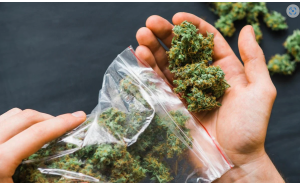A recent study has sent shockwaves through the cannabis community: researchers at Arizona State University (ASU) have uncovered dangerously high levels of Fusarium mycotoxins in cannabis, particularly in illicit samples seized in California and Arizona. These toxic fungal byproducts, known for causing vomiting and infections, were found in 16% of the 118 cannabis samples tested, raising serious red flags about the health risks of unregulated weed.
“The contaminants in illicit cannabis represent a public health risk that needs to be addressed,” says ASU professor Maxwell Leung, who led the groundbreaking study.
🚨 What Did Scientists Find?
Researchers analyzed 118 black-market cannabis samples collected by law enforcement between November 2023 and June 2024. What they discovered was alarming:
-
16% of samples tested positive for mycotoxins.
-
Fusarenon-X, a highly toxic compound, was present in 10 samples at levels ranging from 500 to 1,700 parts per billion (ppb) — far above what is deemed safe for food or agricultural use.
-
Several samples also contained diacetoxyscirpenol, a federally recognized biological toxin.
Perhaps more concerning: these contaminants were not subject to any testing requirements — not even in the legal cannabis market. While some mycotoxins like ochratoxin A are regulated, most dangerous Fusarium strains still slip through the cracks.
💥 Why This Matters: Hidden Health Dangers
Mycotoxins, especially those produced by Fusarium fungi, are not just agricultural nuisances — they’re toxic threats. Health impacts include:
-
Vomiting and gastrointestinal distress
-
Heightened risk of infections in immunocompromised individuals
-
Possible aggravation of Cannabis Hyperemesis Syndrome, a mysterious condition linked to chronic cannabis use and increasing ER visits.
“Many Fusarium mycotoxins can contribute to vomiting symptoms in users,” says Leung. “Their presence in cannabis can also pose an infection risk in immune-compromised users.”
🧪 What Makes Illicit Weed So Risky?

Unlike state-regulated cannabis, illicit products often come from unsanitary grow sites, processed without quality control, and distributed with zero oversight. These conditions create the perfect storm for fungal contamination.
And here’s the kicker: while legalization is spreading across U.S. states, the black market is still booming, with an estimated $76 billion in sales in 2022 — more than twice the legal market’s size.
🔍 What Comes Next? Urgent Need for Oversight
The ASU study highlights a major blind spot in cannabis regulation: no current laws — federal or state — require screening for Fusarium toxins, even in legal dispensaries. With the expanding use of cannabis for medicinal purposes, the oversight gap could have deadly consequences.
Researchers are now calling for:
-
Broader toxin testing requirements, including Fusarium species.
-
Deeper investigation into inhalation and edible exposure risks.
-
Public awareness campaigns targeting at-risk users.
📢 Final Take
If you’re a cannabis user — recreational or medicinal — this study is a wake-up call. Fusarium mycotoxins in cannabis are not just a theoretical issue; they’re already in circulation, and they’re dangerous. Whether you’re buying from a shady dealer or a trusted source, knowing what’s in your weed has never been more important.
Has your cannabis ever been tested for fungal toxins? Let us know your thoughts in the comments. And don’t forget to share this article — someone you know might be at risk.
